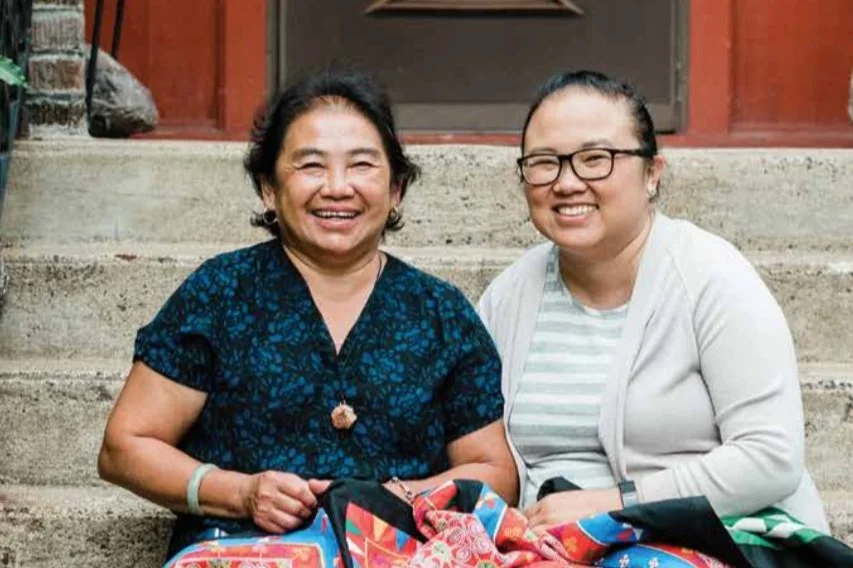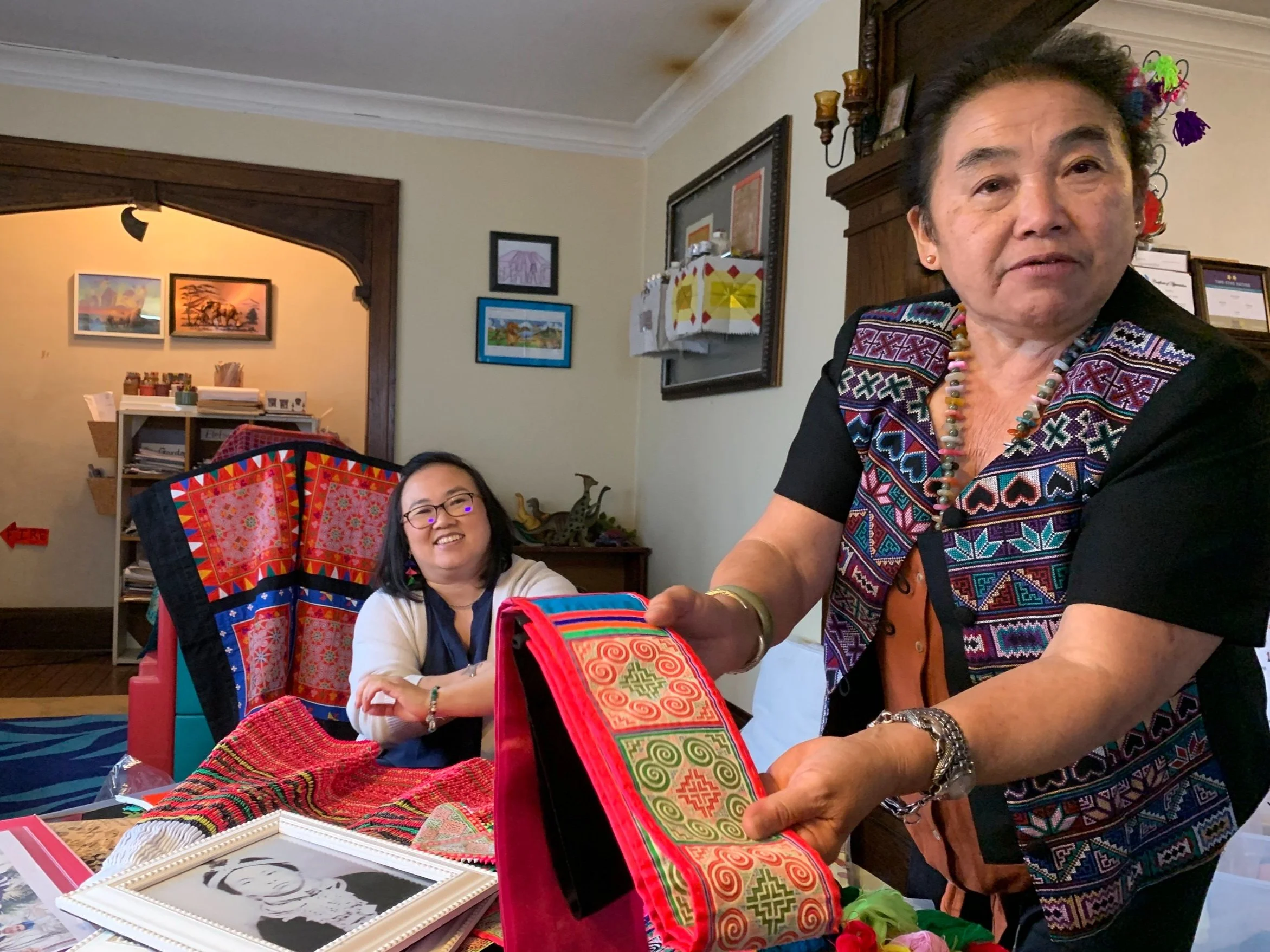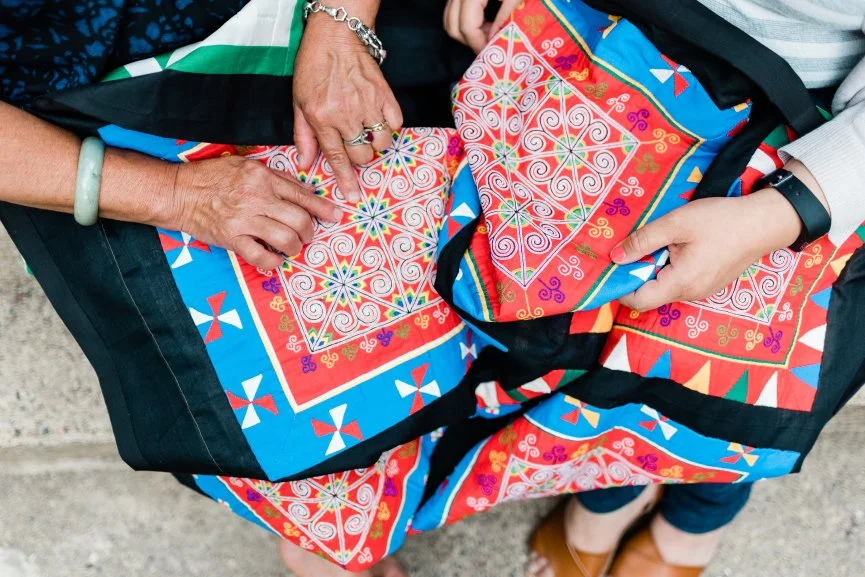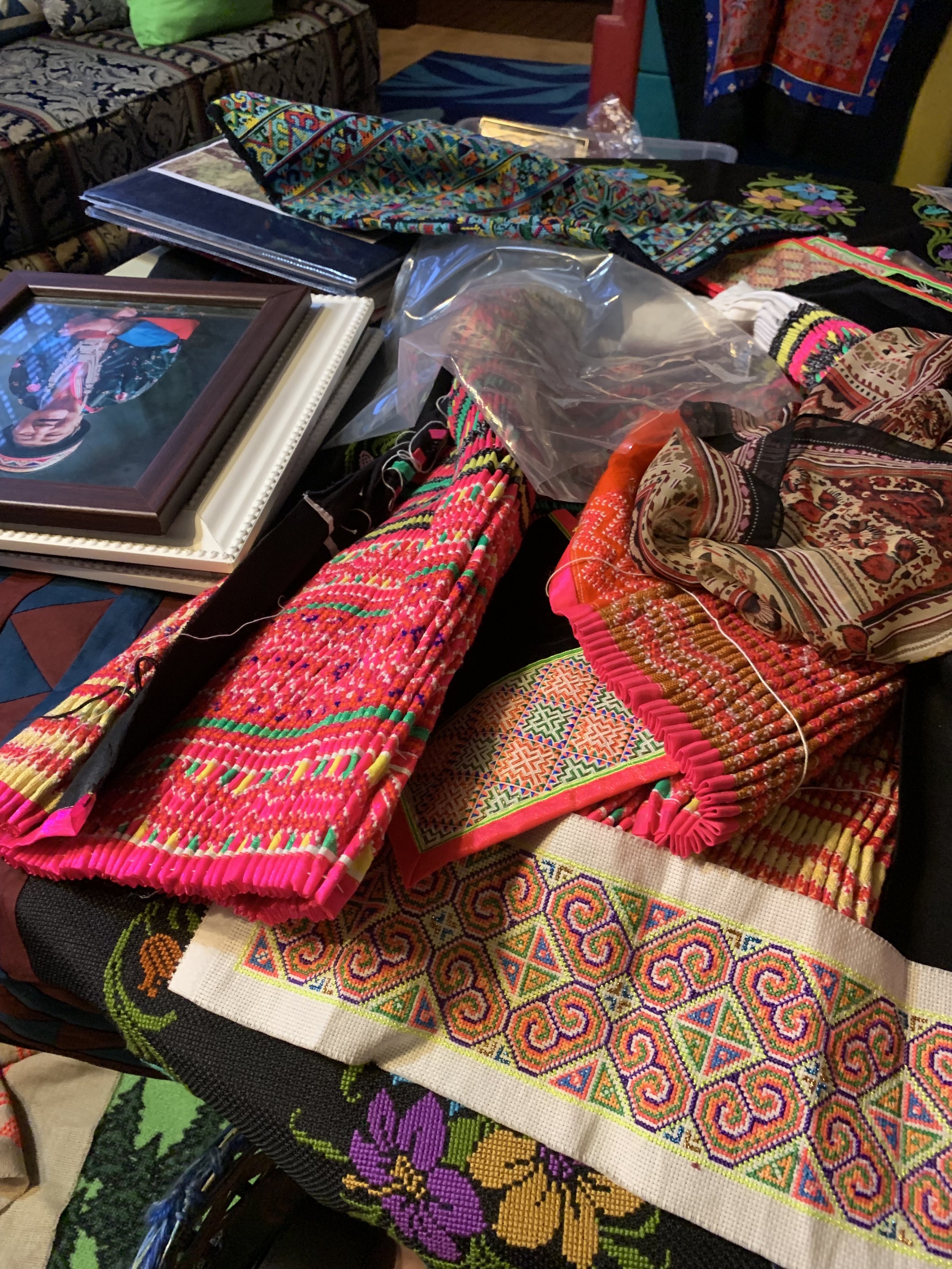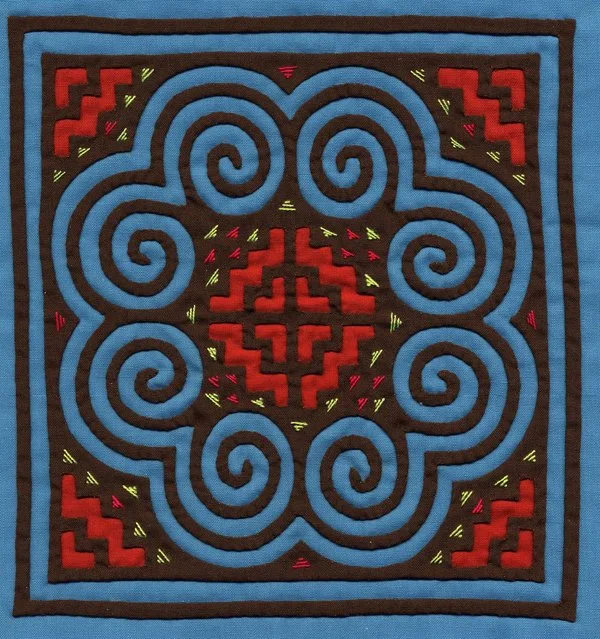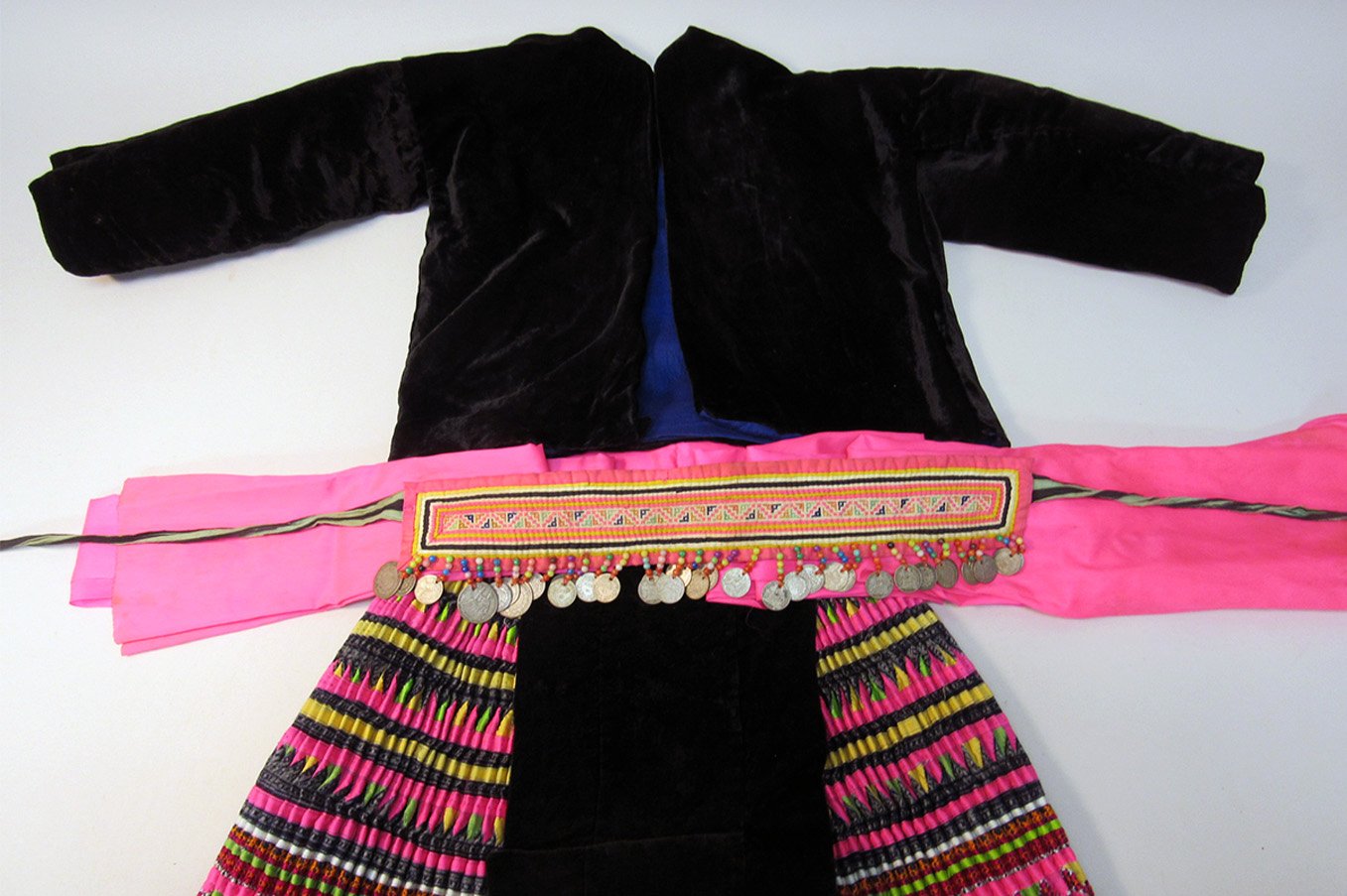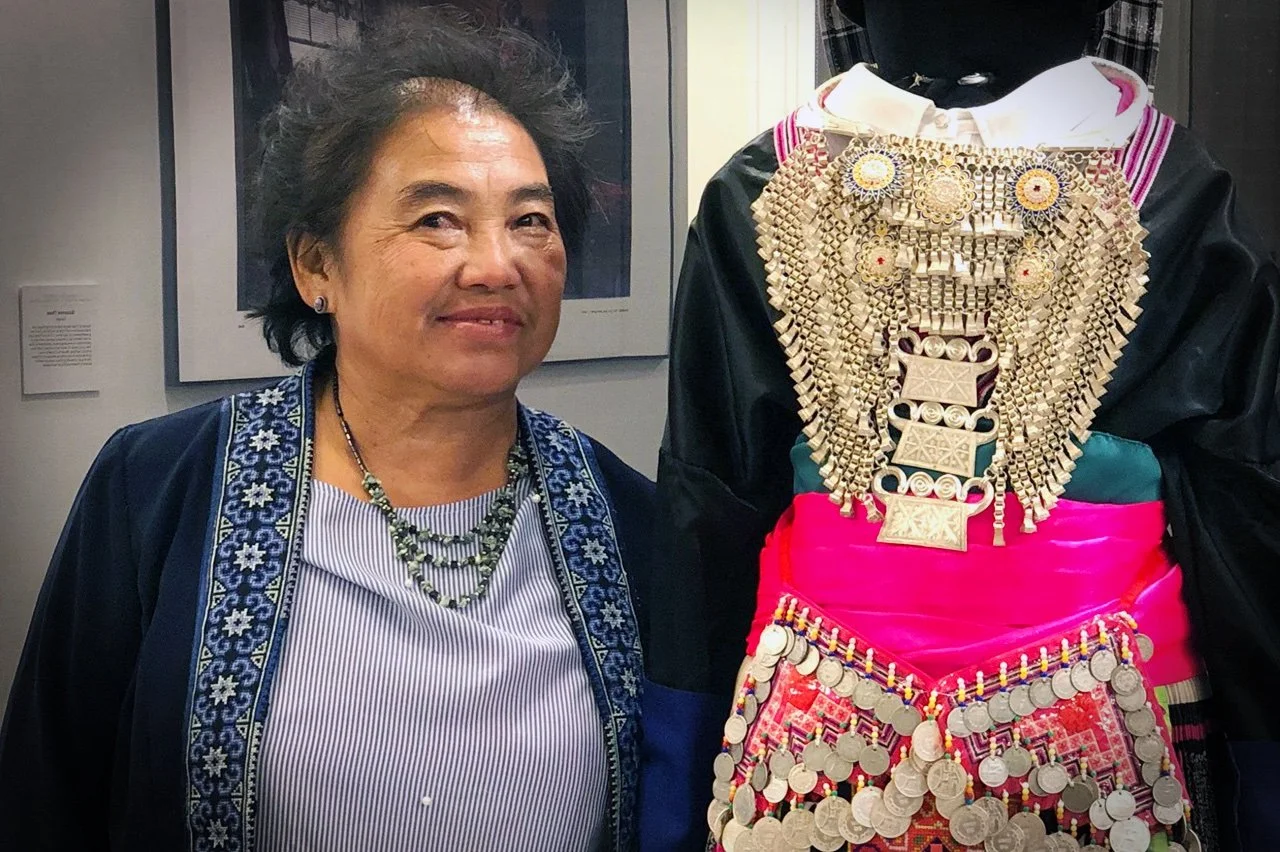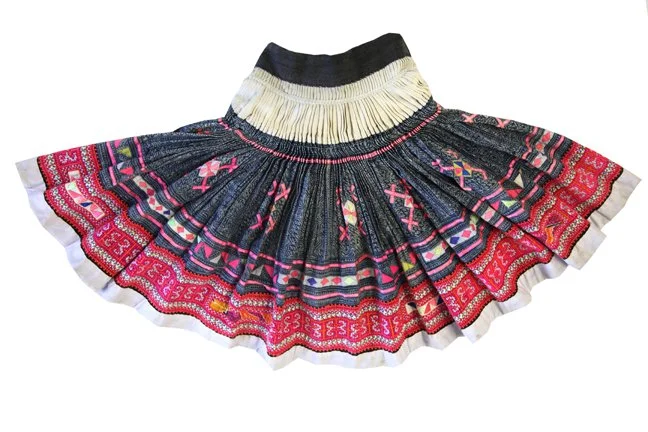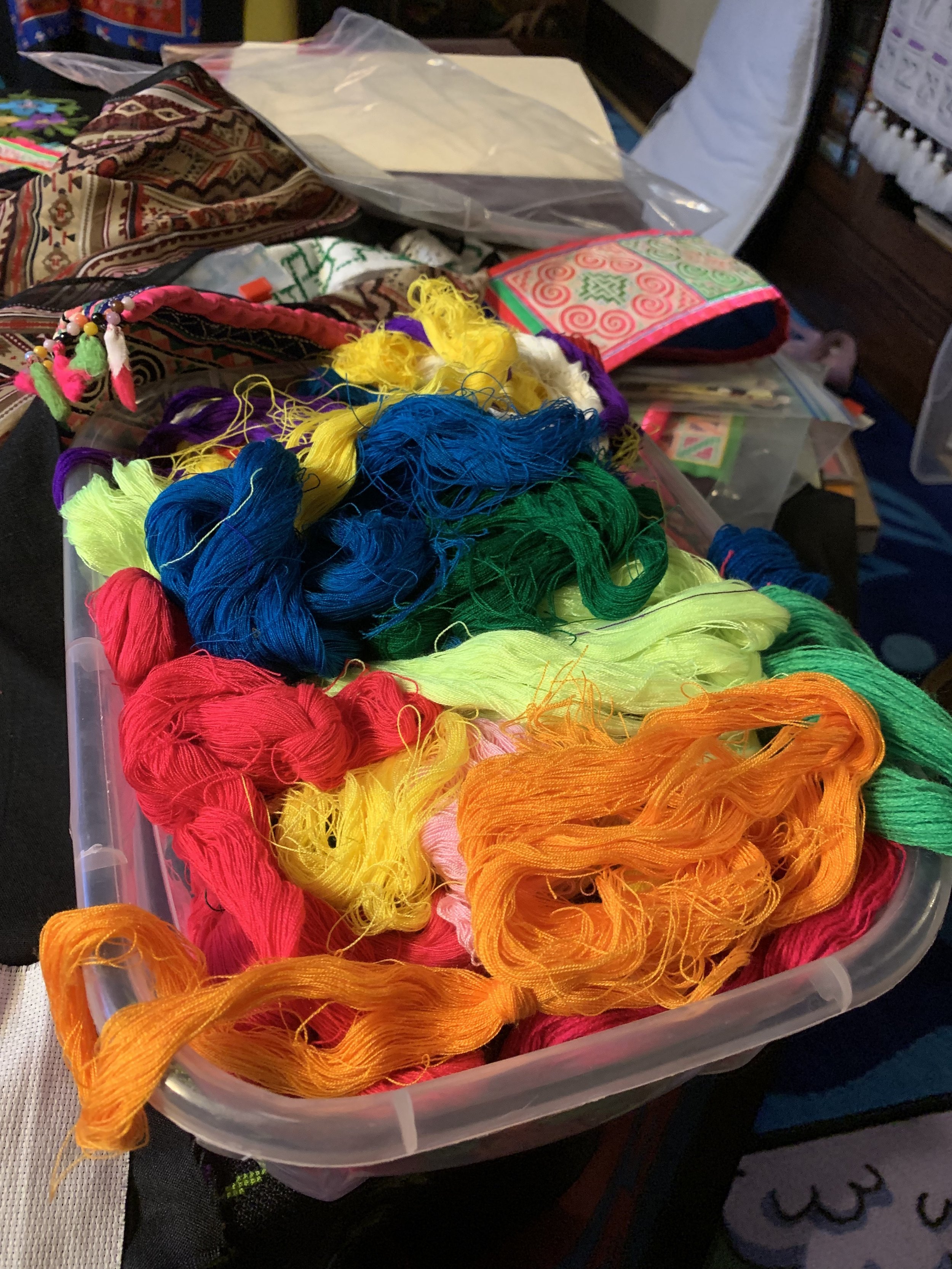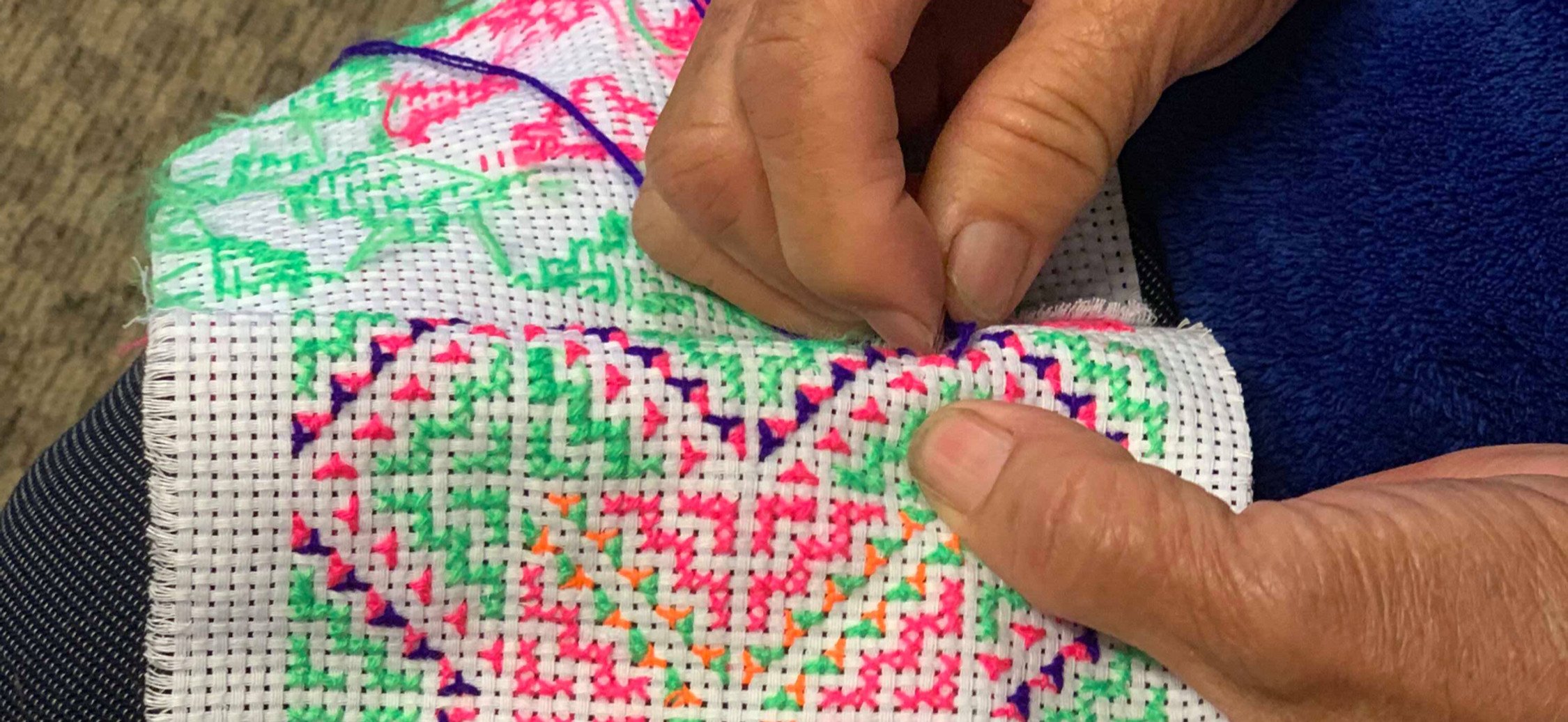Suzanne Thao & Chuayi Yang - A Stitch Across Time
/Suzanne Thao and daughter, Chuayi Yang, displaying Paj Ntaub. Photo by Quiltfolk.
Ten thousand hours, and ten thousand stitches, could not begin to describe the sewing output of Suzanne Thao. To quantify her workflow, one might as well count the singular daubs of paint on the canvasses of Mary Cassatt, or individual letters in the writing of Louise Erdrich.
Suzanne is a virtuoso in the art of Paj Ntaub, a needlework technique practiced by Hmong women. Paj Ntaub (pronounced “pan dau”) is Hmong for “flower cloth.” It is a decorative handicraft of painstakingly small and neat stitches. Paj Ntaub uses colorful silk threads and cloth applique to adorn jackets, hats, sashes, shoulder bags, and tightly pleated skirts to wear for the Hmong New Year, to celebrate courtship and weddings, to outfit and carry new babies, and as funeral attire. Suzanne is not only a prolific seamstress, she is a generous guide as she teaches a new generation of makers to sew and embellish cloth. In doing so, she keeps both personal and Hmong cultural stories alive.
Suzanne’s shows some of her collection of Paj Ntaub in her home. Photo by Tracy Nordstrom
Suzanne’s daughter, Chuayi Yang, was Suzanne’s first Paj Ntaub student. “I was 6 when I started sewing with my mom, Chuayi remembers. “Saturday nights were movie nights” at their house, and Chuayi practiced the intricate stitching with red thread on a long beige cloth that got longer and longer with each movie watched, and each passing year. Suzanne still has Chuayi’s practice piece in her vast collection of Paj Ntaub. “I was good at little projects,” Chuayi remembers, “I never made clothing.” Humbly, Chuayi adds: “My sister was fast at her homework, she practiced her Paj Ntaub. I did my homework slowly; I didn’t have as much time to sew.”
Chuayi shows her earliest Paj Ntaub stitches. Photo by Tracy Nordstrom
Chuayi did, however, understand how important the hours of sewing were to keep a Hmong tradition alive, and today she is re-imagining it. “Paj Ntaub is a woman’s skill,” she notes, “women have maintained it.” Mom Suzanne agrees: “My grandmother taught me Paj Ntaub.” Pointing to a square of cloth with a reverse applique pattern, Suzanne continues: “She said to me, ‘Hmong knowledge and skills are sewn there. That’s how you know you are Hmong’.”
Today, Suzanne teaches a free 3-hour workshop each month in her St. Paul home to anyone wanting to learn Paj Ntaub. “I will teach you what you want to learn,” she says with a devoted certainty. She knows that time to sew, and teachers like her own grandmothers, are in short supply, made difficult in the Hmong diaspora from Laos, Thailand, and Vietnam, and as more Hmong women get college degrees, work outside the home, and raise families in Minnesota. “I want to tell the story of Paj Ntaub and share it with the next generation. I will leave it to them to reflect on the stories and search for the messages inside them,” Suzanne says. “If any sons or daughters want to learn how to make Paj Ntaub, why not teach them all you know?”
Daughter Chuayi knew Suzanne would be an eager teacher. Chuayi serves on the Board of Directors of St Paul’s Hmong Museum and remembers her first thought of offering Paj Ntaub to the community. Her epiphany came during a conversation with Mai Nhia Vang, the Founder and Executive Director of the museum: “We talked about the lack of space for intergenerational conversations,” Chuayi says. “We remembered times when our grandmothers sat by the window, and we would sit with them and observe what they were doing with their threads and their needles and cloth. We needed a space to recreate those conversations, so different generations could come together and learn from one another.”
Skills passed from one generation to the next. Photo by Quiltfolk
Suzanne did not hesitate when Chuayi asked her to be the museum’s inaugural Paj Ntaub teacher. The Hmong Museum does not maintain a physical space in St. Paul, not yet; for now, it offers programming throughout the community, in intimate settings, like Suzanne’s home. Luckily, hers is a location comfortable with hosting people: by day, Suzanne’s home is an early learning day care center where she teaches up to 10 children. The rooms on her first floor are filled with play rugs and geometrically pleasing Hmong pillows; the walls hold brightly colored posters to encourage reading and “Playroom Rules”; and there is a golden, laughing Buddha overseeing all activity with abundant generosity and contagious joy. There are plenty of low chairs and tables, too, right-sized for the small people in Suzanne’s care. Those same tables and chairs are also perfect for Paj Ntaub: “My grandmother taught me a good sitting position,” Suzanne says, demonstrating obedience to her ancestors and her craft: “Use a small stool to keep posture strong. You must have a strong back for a lifetime of Paj Ntaub!” She punctuates her final thought with a broad smile and a definitive nod.
A small stool is best for good posture while sewing Paj Ntaub. Photo by Tracy Nordstrom
Chuayi is delighted her mother agreed to teach. Not only do the students thrive under Suzanne’s tutelage - Suzanne works one-on-one with her students during the monthly class, offering cross stitch and reverse applique; she opens her home one night a week for “drop in” assistance on any aspect of Paj Ntaub - Chauyi says the teaching has changed Suzanne. “For my mom, this is healing, because as she sews, she remembers. Stories that she forgot for a long time. She didn’t practice [Paj Ntaub] for many years because she was working. Now, hers is the joy of sharing with those who really love it.”
As Suzanne selects pieces from her collection of Paj Ntaub, she offers memories, one at a time:
Grandmothers in Laos taught her that Paj Ntaub needles are tiny, and gold needles are the best, and they must be very sharp. Suzanne still has her earliest practice stitches in a long cloth. “Be patient,” her grandmother instructed, “be patient, be patient.” Adding: “Make your best stitches. Go slowly. Practice every day.”
Cloth, silk thread, and sewing notions came from China. Vendors came to her town just once a year. Young girls were responsible to make clothing for everyone in their families. “If you cannot sew,” Suzanne’s elders told her, “you will not be a good wife!”
Remembering her Catholic education: Nuns in Laos could speak Hmong and encouraged Suzanne to keep up her Paj Ntaub while going to school. Suzanne sewed a “Lao-Hmong” flag and proudly won first prize in a school contest.
Living in a Thai refugee camp, Suzanne experienced a shortage of thread. Resourceful and extroverted, Suzanne spent her days visiting others, helping to clean the camp, engaging elders, and making many friends. “Age 17. Nothing to do,” Suzanne says, shaking her head. “I got thread from everyone. A little color here, a little there. Not enough fabric to make pants, so I made a pillow!” She calls her work from this time her “Friendship Paj Ntaub.”
At 21, Suzanne made a skirt in the Green Hmong style to impress her future mother-in-law. Suzanne says, “Pleats, pleats, pleats! Fabric six times the length of the finished skirt.” Chuayi explains that her mother is White Hmong, and her beloved was Green Hmong. “Language and stitching was a little different,” Suzanne says. She had to prove that she was worthy of the Green Hmong. “I cried a lot because [the dialect and style of stitching] was hard and new.” She worried at the time (and laughs now as she remembers): “If you don’t make the skirt, you will be naked!” She knew her sewing skill had earned her acceptance when she heard: “You are my daughter-in-law; I claim you now.”
Chuayi carefully chooses a piece of Paj Ntaub from her mother’s collection; she holds it lovingly and offers a remembrance of Suzanne’s first workshop teaching Paj Ntaub:
“In our first class, there was a woman whose mom was Hmong and dad was Korean. She never really learned about her Hmong identity. Paj Ntaub was her first introduction. She was very emotional. She said, ‘I am connecting with my identity, with who I AM.’ A few weeks later, she finished her piece and took a picture and sent it to us. She flipped it over to show the messy back. She shared that. She understood that [Paj Ntaub and reverse applique] is a journey. Perfection takes time.”
Stories make Paj Ntaub, and sewing strengthens community among the Hmong and non-Hmong practitioners in Suzanne’s living room. One wonders how Suzanne, who is spry at 64, has the energy to teach after wrangling infants and toddlers all day. But the sewing lights her up: “I want students to feel good about their work, feel confident,” she affirms. Neither Suzanne nor Chuayi expect the students to make an entire outfit like earlier generations of Hmong women did; a small square of exquisitely offered stitches is enough: “You can make a single piece,” Suzanne says, “and it is with your hands. Wear it on your jacket, your skirt, your hat, as a key chain. Have it with you all the time.”
Suzanne and the grandmothers who taught her Paj Ntaub. She and daughter Chuayi are now teaching a new generation the Hmong technique. Photo by Tracy Nordstrom
Resources:
Hmong Museum: https://hmongmuseummn.org/
Project Paj Ntaub: https://hmongmuseummn.org/project-paj-ntaub/
Photos: Chuayi Yang; Tracy Nordstrom; Hmong Museum, unless otherwise noted


